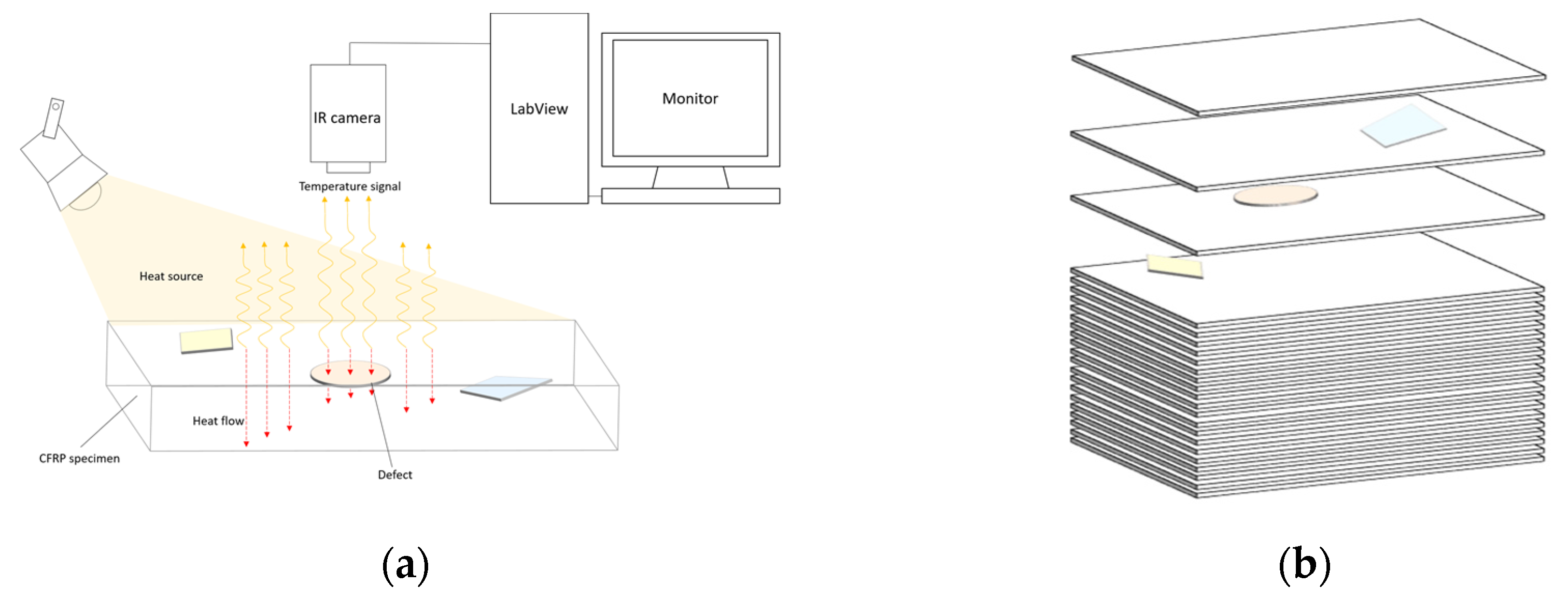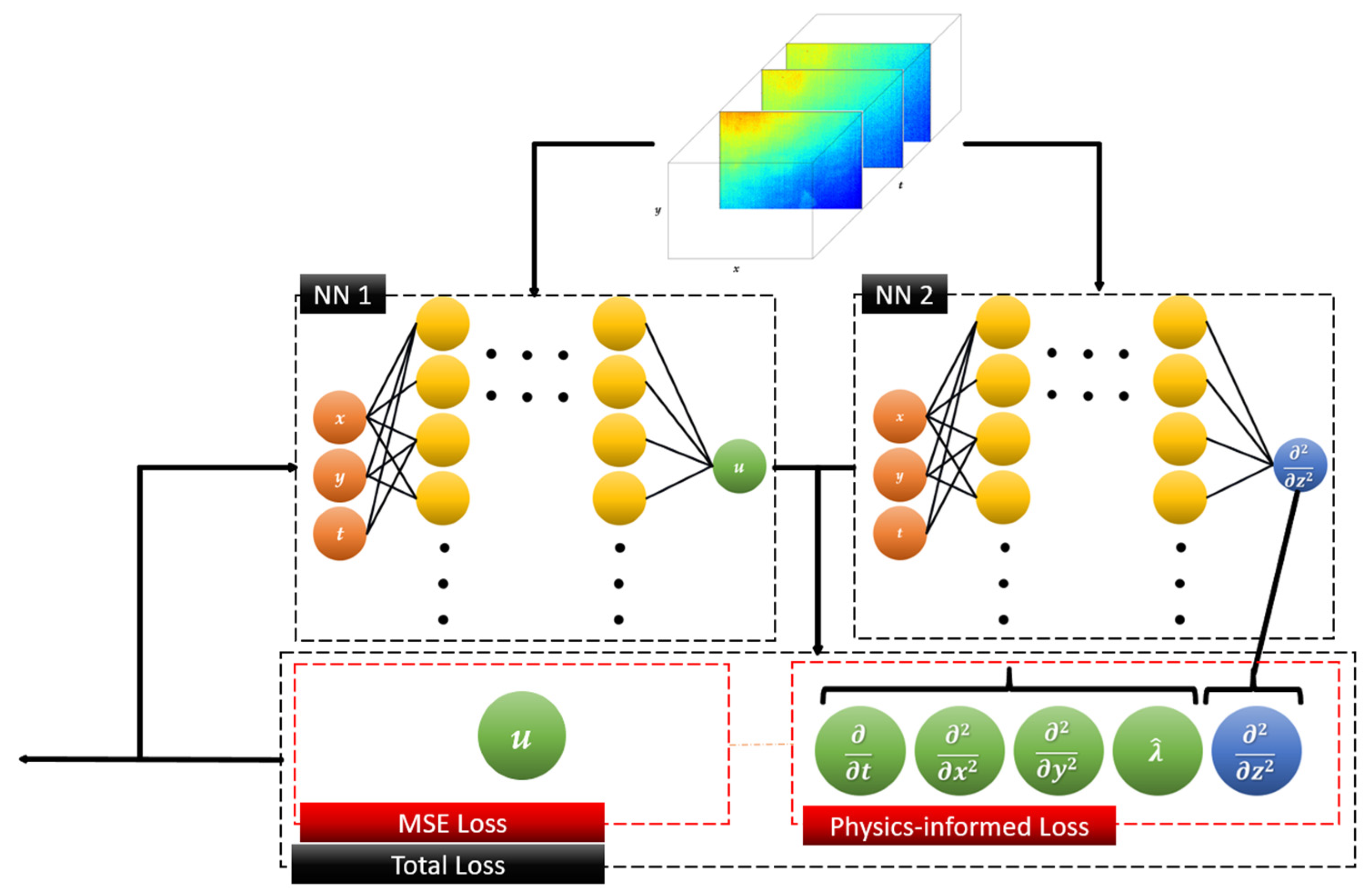A Physics-Informed Neural Network Method for Defect Identification in Polymer Composites Based on Pulsed Thermography †
Abstract
:1. Introduction
2. Methodologies
2.1. Pulsed Thermography
2.2. Physics-Informed Neural Network (PINN)
- BC Loss: Neumann boundary conditions (BC) where no heat flux occurs at the edges of the specimen;
- Prediction Loss: Mean square error between prediction and actual responses ui;
- PDE Loss: PDE whose form is given by 3-dimensional Fourier’s law of heat diffusion.
3. Results and Discussion
References
- Lai, W.L.; Kou, S.C.; Poon, C.S.; Tsang, W.F.; Ng, S.P.; Hung, Y.Y. Characterization of flaws embedded in externally bonded CFRP on concrete beams by infrared thermography and shearography. J. Nondestruct. Eval. 2009, 28, 27–35. [Google Scholar] [CrossRef]
- Maldague, X. Theory and Practice of Infrared Technology for Nondestructive Testing; Wiley: New York, NY, USA, 2001. [Google Scholar]
- Raissi, M.; Perdikaris, P.; Karniadakis, G.E. Physics-informed neural networks: A deep learning framework for solving forward and inverse problems involving nonlinear partial differential equations. J. Comput. Phys. 2019, 378, 686–707. [Google Scholar] [CrossRef]
- LeCun, Y.; Bengio, Y.; Hinton, G. Deep learning. Nature 2015, 521, 436–444. [Google Scholar] [CrossRef] [PubMed]
- Rajic, N. Principal component thermography for flaw contrast enhancement and flaw depth characterisation in composite structures. Compos. Struct. 2002, 58, 521–528. [Google Scholar] [CrossRef]





Publisher’s Note: MDPI stays neutral with regard to jurisdictional claims in published maps and institutional affiliations. |
© 2021 by the authors. Licensee MDPI, Basel, Switzerland. This article is an open access article distributed under the terms and conditions of the Creative Commons Attribution (CC BY) license (https://creativecommons.org/licenses/by/4.0/).
Share and Cite
Lim, W.H.; Sfarra, S.; Yao, Y. A Physics-Informed Neural Network Method for Defect Identification in Polymer Composites Based on Pulsed Thermography. Eng. Proc. 2021, 8, 14. https://doi.org/10.3390/engproc2021008014
Lim WH, Sfarra S, Yao Y. A Physics-Informed Neural Network Method for Defect Identification in Polymer Composites Based on Pulsed Thermography. Engineering Proceedings. 2021; 8(1):14. https://doi.org/10.3390/engproc2021008014
Chicago/Turabian StyleLim, Wei Hng, Stefano Sfarra, and Yuan Yao. 2021. "A Physics-Informed Neural Network Method for Defect Identification in Polymer Composites Based on Pulsed Thermography" Engineering Proceedings 8, no. 1: 14. https://doi.org/10.3390/engproc2021008014
APA StyleLim, W. H., Sfarra, S., & Yao, Y. (2021). A Physics-Informed Neural Network Method for Defect Identification in Polymer Composites Based on Pulsed Thermography. Engineering Proceedings, 8(1), 14. https://doi.org/10.3390/engproc2021008014







